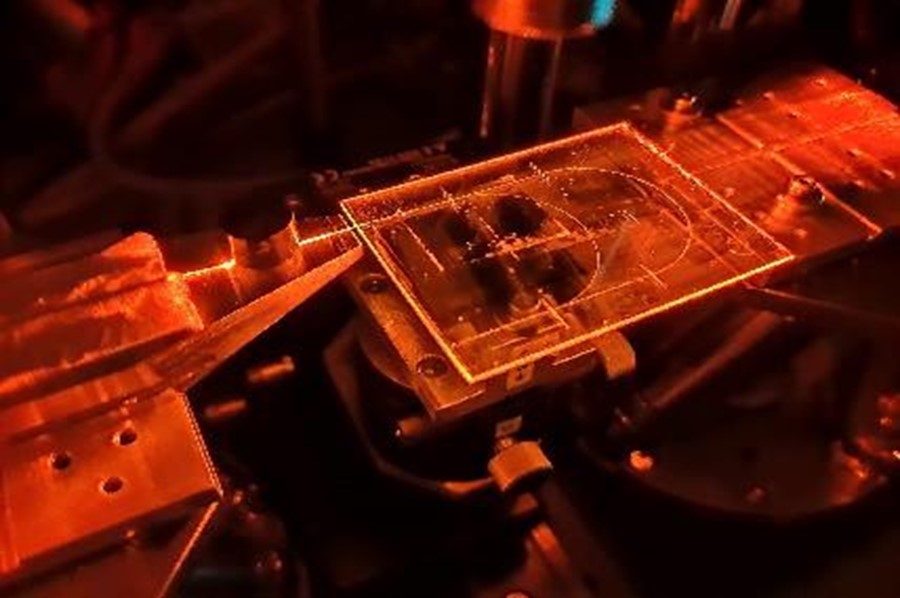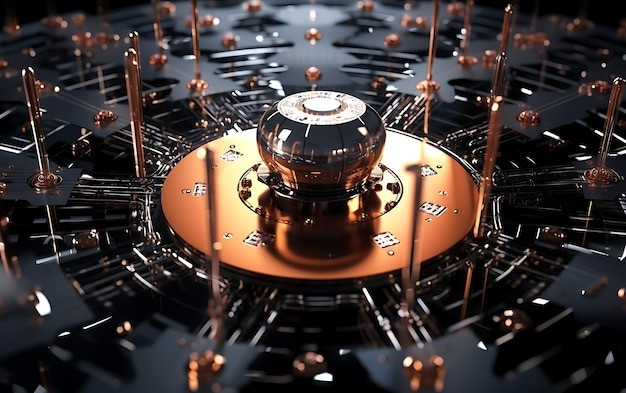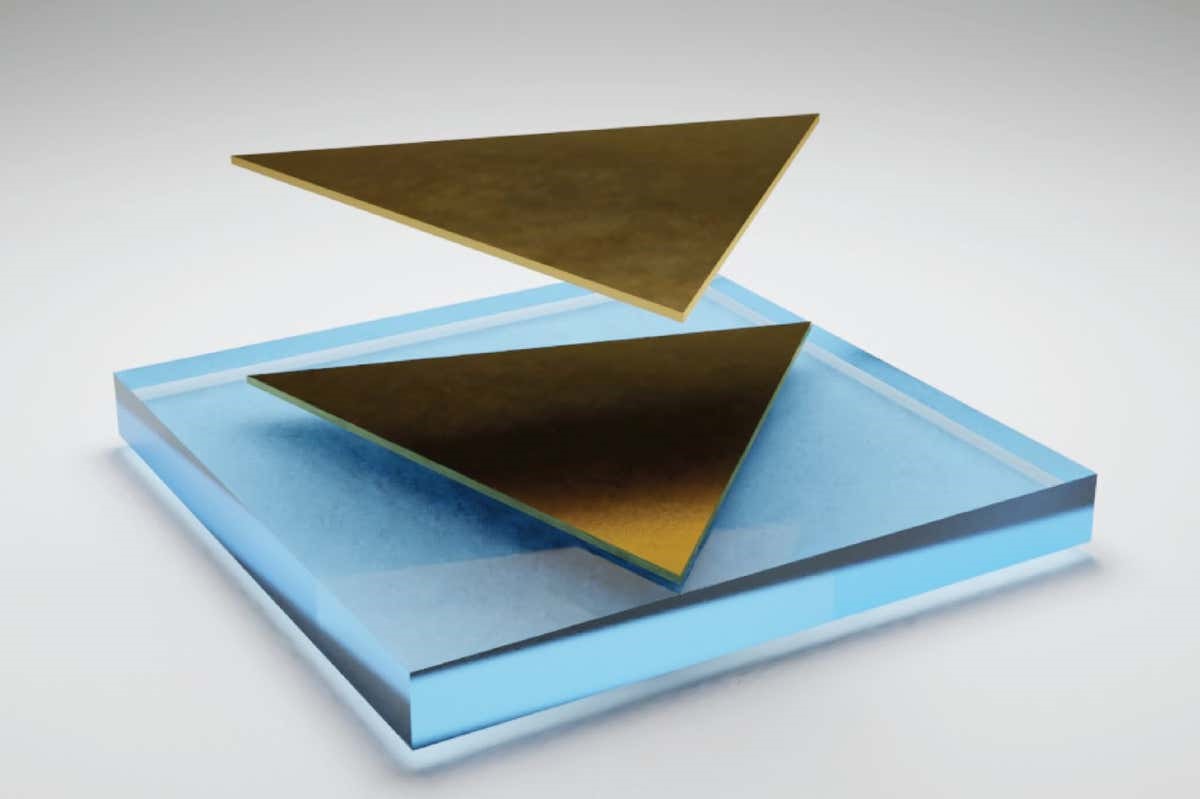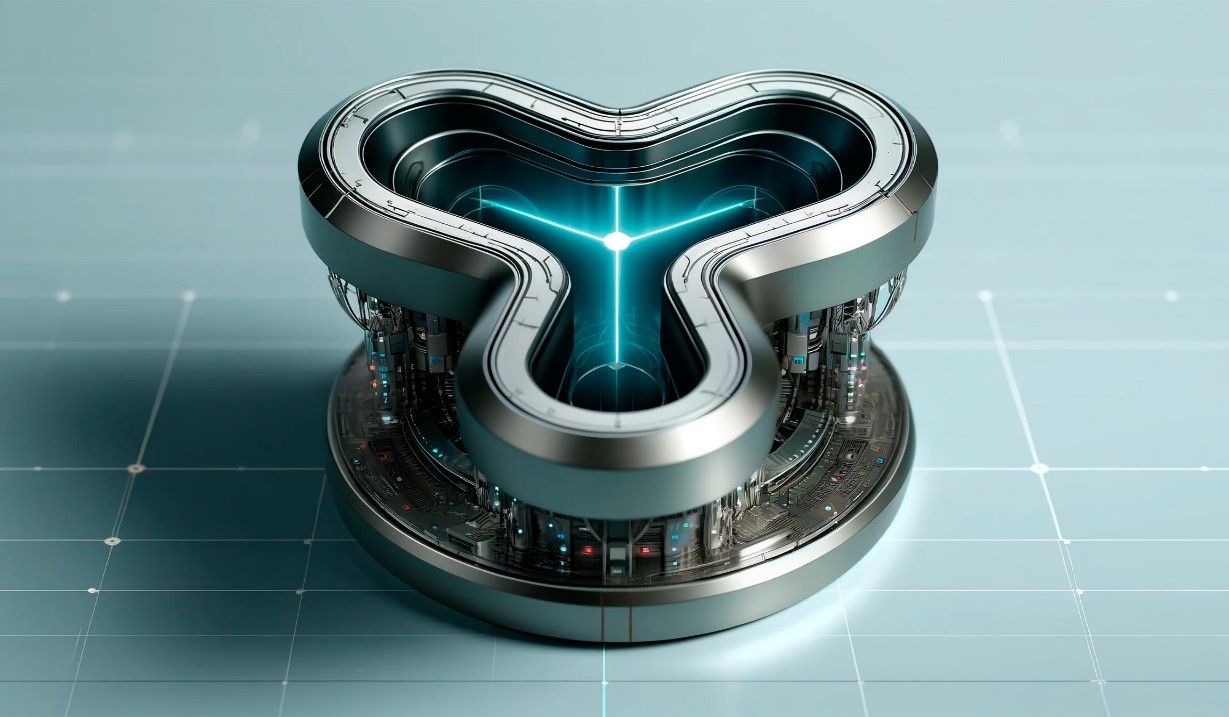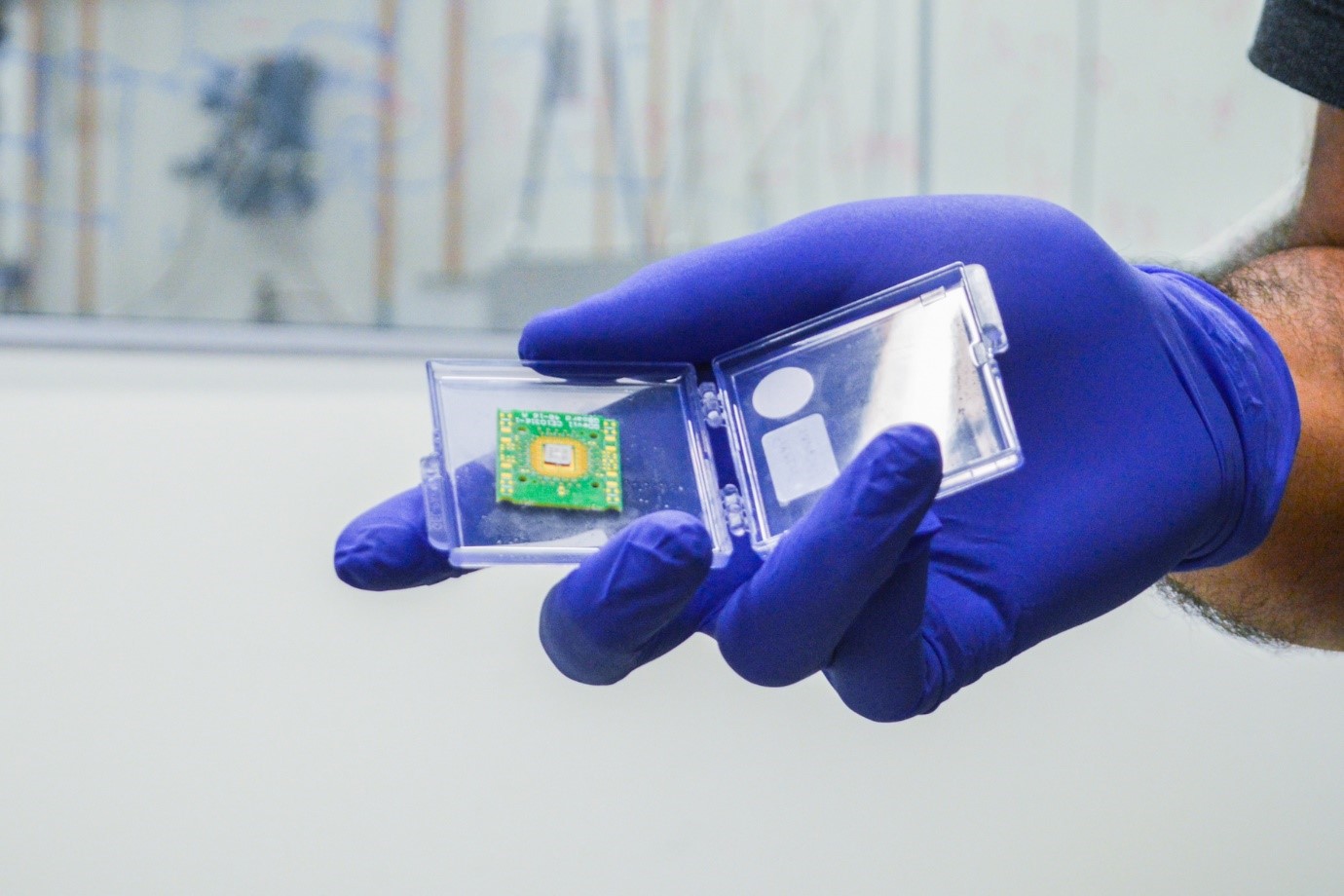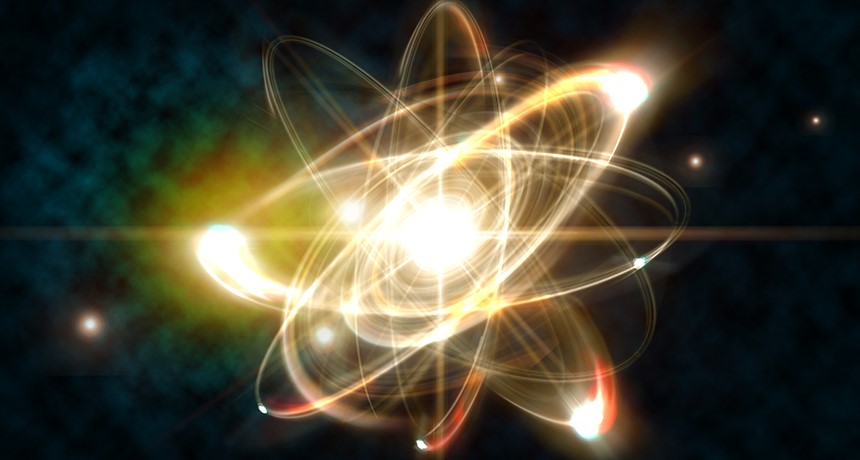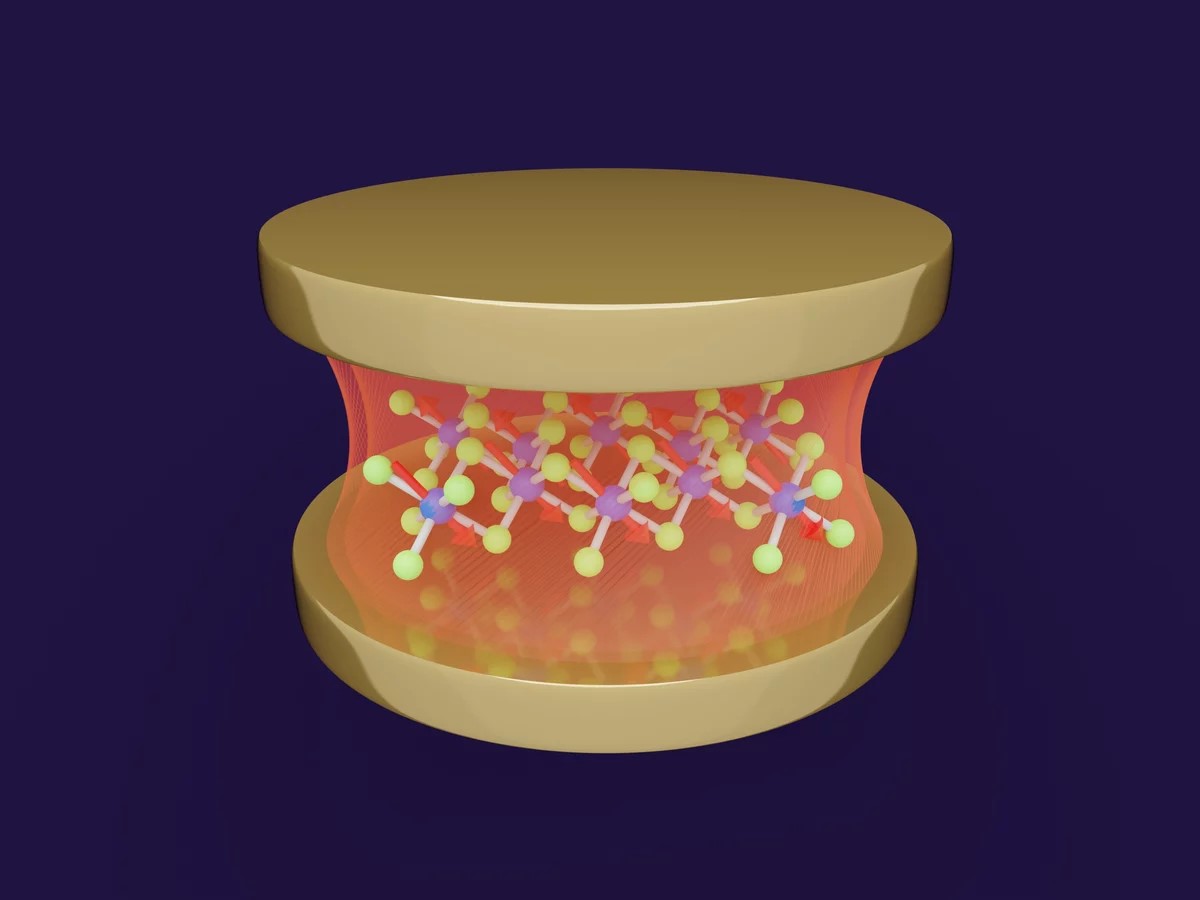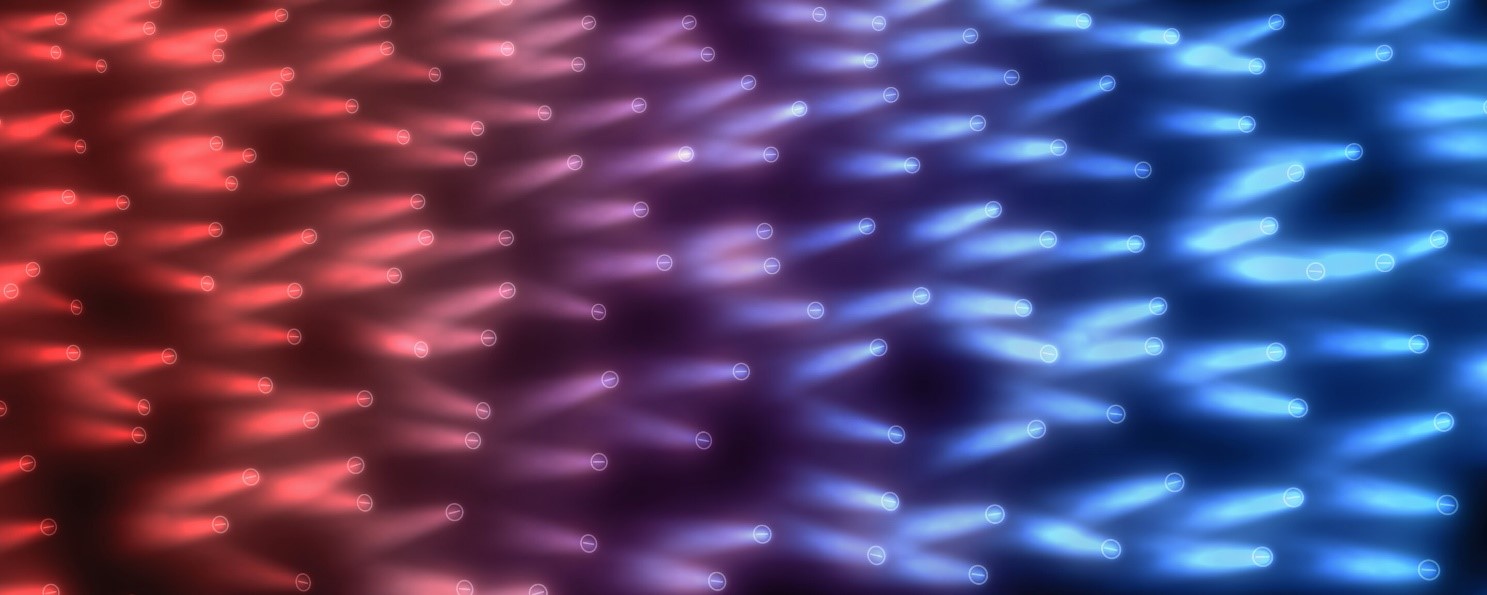Purple Bronze Holds the Key to Perfect Quantum Switch
In a groundbreaking discovery, quantum scientists led by the University of Bristol have uncovered a rare phenomenon within purple bronze that could revolutionize the world of quantum devices. Published in the journal Science, the research reveals the existence of two opposing electronic states within this unique one-dimensional metal, paving the way for the creation of a 'perfect switch' in quantum technology.

Figure 1. Purple Bronze Material. (Credit: University of Bristol)
Figure 1 shows a representation of emergent symmetry, showing a perfectly symmetric water droplet emerging from a layering of snow. The ice crystals in the snow, by contrast, have a complex shape and therefore a lower symmetry than the water droplet. The purple colour denotes the purple bronze material in which this phenomenon was discovered.
Purple bronze, composed of individual conducting chains of atoms, demonstrates a polarized versatility known as 'emergent symmetry.' This means that tiny changes in the material, triggered by stimuli like heat or light, can lead to an instant transition between an insulating state with zero conductivity to a superconductor with unlimited conductivity, and vice versa. This remarkable property offers the potential for an ideal On/Off switch in future quantum technology developments.
The journey to this discovery began 13 years ago when two PhD students, Xiaofeng Xu and Nick Wakeham, measured the magnetoresistance of purple bronze in the lab of lead author Nigel Hussey, Professor of Physics at the University of Bristol. The resistance of purple bronze exhibited a complex behavior dependent on the direction of the electrical current and temperature. However, the magnetoresistance was surprisingly simple, following a perfect linear temperature dependence.
For seven years, the data remained unexplained until a chance encounter in 2017. Professor Hussey attended a seminar by physicist Dr. Piotr Chudzinski on purple bronze, sparking a collaboration. Dr. Chudzinski's theory proposed that the resistive upturn in the material could be caused by interference between conduction electrons and elusive, composite particles known as 'dark excitons.' Subsequent measurements confirmed the theory, unraveling the complexity of the data.
The material itself exhibited both insulating and superconducting behavior depending on its growth conditions, leading to the concept of 'emergent symmetry.' As the temperature lowered, the interaction between charge carriers and excitons caused the material to gravitate towards the boundary between insulating and superconducting states. This physical symmetry, termed 'emergent symmetry,' is a world-first in metal behavior.
The analogy of a magic trick was used to describe this phenomenon by Dr. Chudzinski, likening the dull, distorted figure of purple bronze to a magician's transformation into a beautiful, perfectly symmetric sphere. Nature itself becomes the magician in this quantum spectacle.
Further testing involved investigating 100 individual crystals, some insulating and others superconducting. The results solidified the theory, showcasing the wildly different ground states of various crystals. Looking ahead, the researchers believe that this discovery could be leveraged to create quantum switches in circuits, where tiny stimuli induce significant changes in switch resistance.
This exciting revelation in quantum science opens new doors for the development of advanced quantum devices and marks a significant step towards harnessing the full potential of emergent symmetry in materials like purple bronze.
Source: University of Bristol
Cite this article:
Hana M (2023), Purple Bronze Holds the Key to Perfect Quantum Switch, AnaTechMaz, pp. 132


